Yuan Gan
Efficient Emotional Adaptation for Audio-Driven Talking-Head Generation
Sep 10, 2023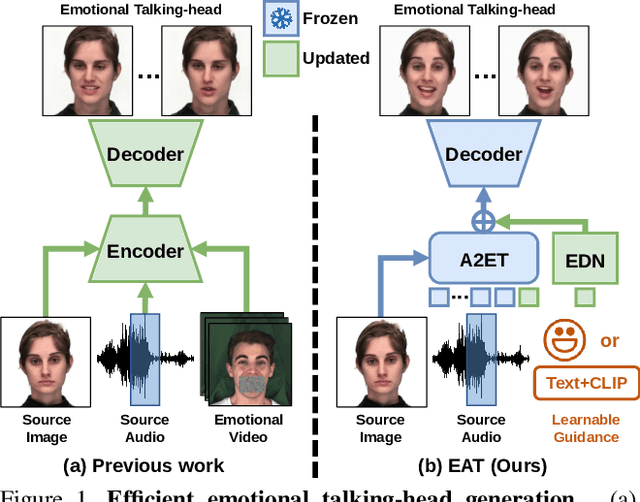

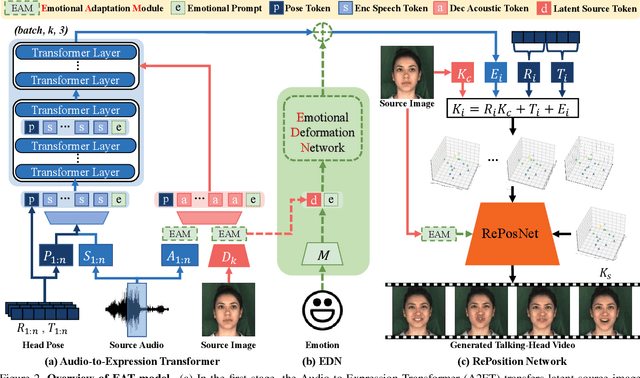

Abstract:Audio-driven talking-head synthesis is a popular research topic for virtual human-related applications. However, the inflexibility and inefficiency of existing methods, which necessitate expensive end-to-end training to transfer emotions from guidance videos to talking-head predictions, are significant limitations. In this work, we propose the Emotional Adaptation for Audio-driven Talking-head (EAT) method, which transforms emotion-agnostic talking-head models into emotion-controllable ones in a cost-effective and efficient manner through parameter-efficient adaptations. Our approach utilizes a pretrained emotion-agnostic talking-head transformer and introduces three lightweight adaptations (the Deep Emotional Prompts, Emotional Deformation Network, and Emotional Adaptation Module) from different perspectives to enable precise and realistic emotion controls. Our experiments demonstrate that our approach achieves state-of-the-art performance on widely-used benchmarks, including LRW and MEAD. Additionally, our parameter-efficient adaptations exhibit remarkable generalization ability, even in scenarios where emotional training videos are scarce or nonexistent. Project website: https://yuangan.github.io/eat/
VidFace: A Full-Transformer Solver for Video FaceHallucination with Unaligned Tiny Snapshots
May 31, 2021



Abstract:In this paper, we investigate the task of hallucinating an authentic high-resolution (HR) human face from multiple low-resolution (LR) video snapshots. We propose a pure transformer-based model, dubbed VidFace, to fully exploit the full-range spatio-temporal information and facial structure cues among multiple thumbnails. Specifically, VidFace handles multiple snapshots all at once and harnesses the spatial and temporal information integrally to explore face alignments across all the frames, thus avoiding accumulating alignment errors. Moreover, we design a recurrent position embedding module to equip our transformer with facial priors, which not only effectively regularises the alignment mechanism but also supplants notorious pre-training. Finally, we curate a new large-scale video face hallucination dataset from the public Voxceleb2 benchmark, which challenges prior arts on tackling unaligned and tiny face snapshots. To the best of our knowledge, we are the first attempt to develop a unified transformer-based solver tailored for video-based face hallucination. Extensive experiments on public video face benchmarks show that the proposed method significantly outperforms the state of the arts.
3D Shape Segmentation via Shape Fully Convolutional Networks
May 26, 2018
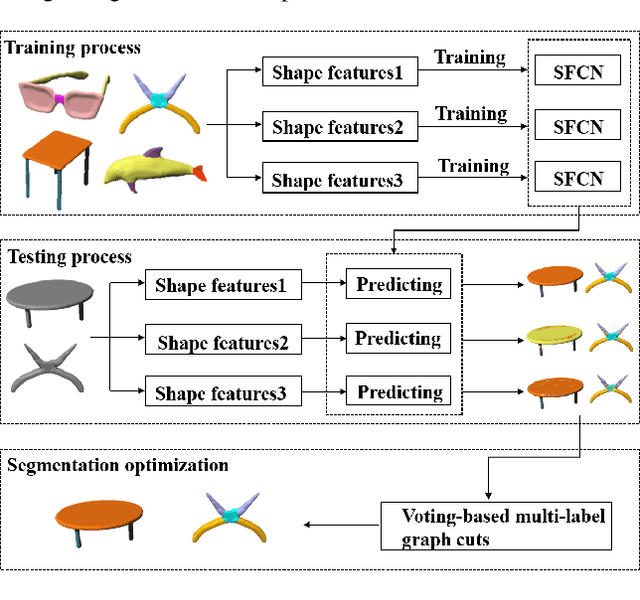
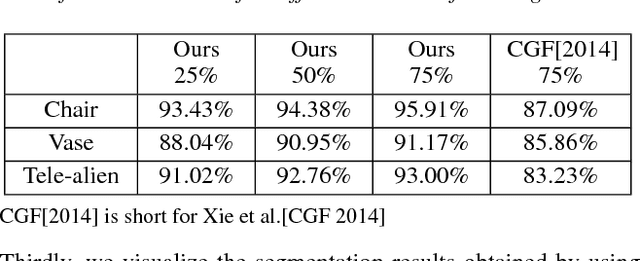
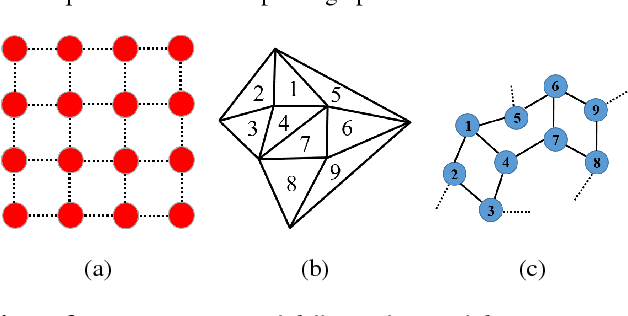
Abstract:We desgin a novel fully convolutional network architecture for shapes, denoted by Shape Fully Convolutional Networks (SFCN). 3D shapes are represented as graph structures in the SFCN architecture, based on novel graph convolution and pooling operations, which are similar to convolution and pooling operations used on images. Meanwhile, to build our SFCN architecture in the original image segmentation fully convolutional network (FCN) architecture, we also design and implement a generating operation} with bridging function. This ensures that the convolution and pooling operation we have designed can be successfully applied in the original FCN architecture. In this paper, we also present a new shape segmentation approach based on SFCN. Furthermore, we allow more general and challenging input, such as mixed datasets of different categories of shapes} which can prove the ability of our generalisation. In our approach, SFCNs are trained triangles-to-triangles by using three low-level geometric features as input. Finally, the feature voting-based multi-label graph cuts is adopted to optimise the segmentation results obtained by SFCN prediction. The experiment results show that our method can effectively learn and predict mixed shape datasets of either similar or different characteristics, and achieve excellent segmentation results.
* We update some missing references about intrinsic CNNs (2018.5.24)
Large-Scale 3D Shape Reconstruction and Segmentation from ShapeNet Core55
Oct 27, 2017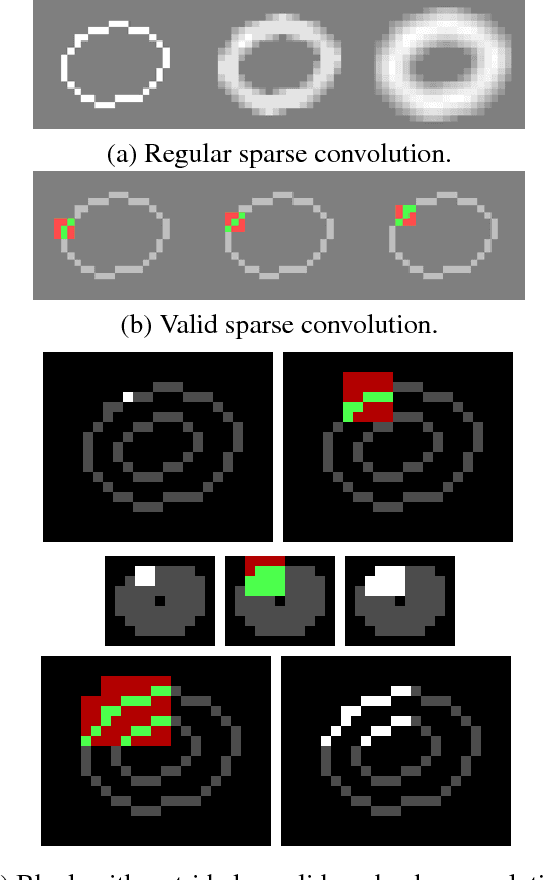
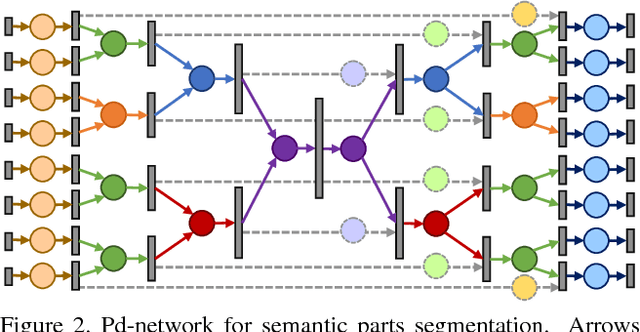

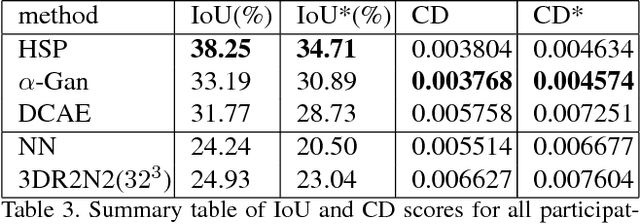
Abstract:We introduce a large-scale 3D shape understanding benchmark using data and annotation from ShapeNet 3D object database. The benchmark consists of two tasks: part-level segmentation of 3D shapes and 3D reconstruction from single view images. Ten teams have participated in the challenge and the best performing teams have outperformed state-of-the-art approaches on both tasks. A few novel deep learning architectures have been proposed on various 3D representations on both tasks. We report the techniques used by each team and the corresponding performances. In addition, we summarize the major discoveries from the reported results and possible trends for the future work in the field.
 Add to Chrome
Add to Chrome Add to Firefox
Add to Firefox Add to Edge
Add to Edge